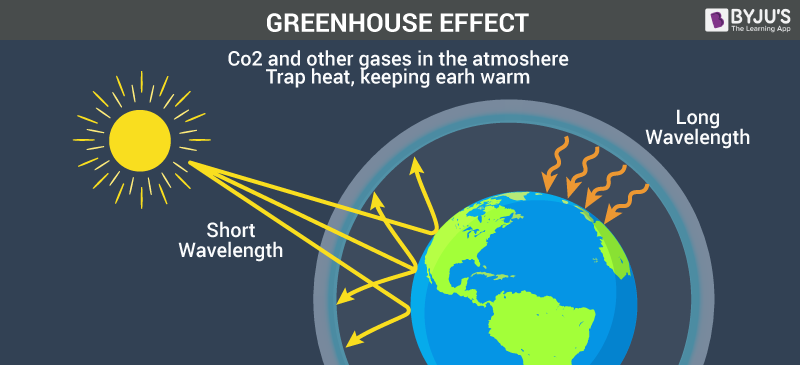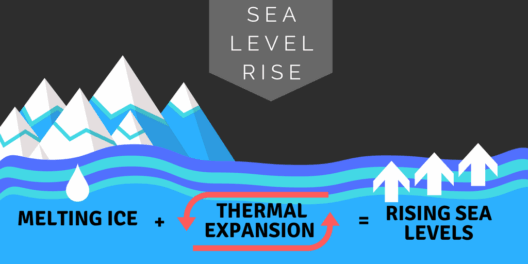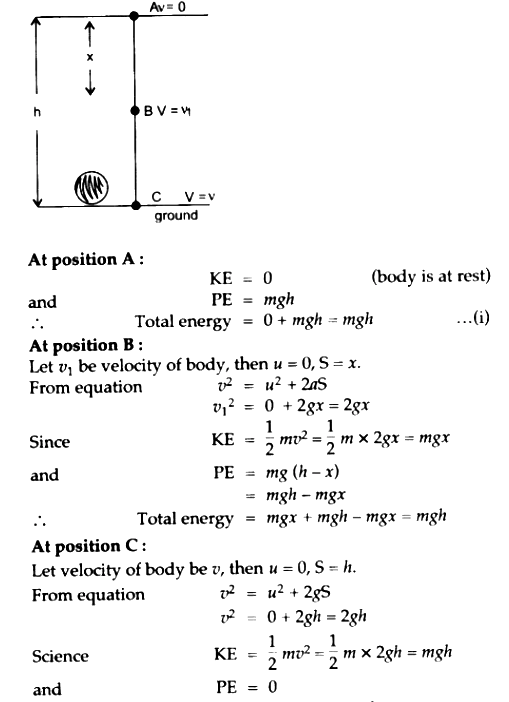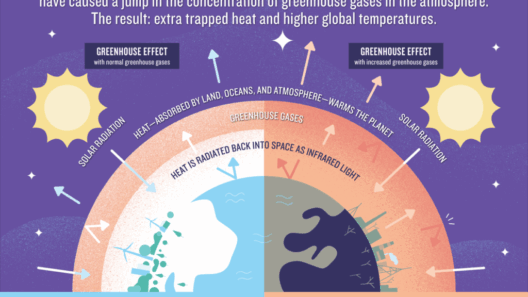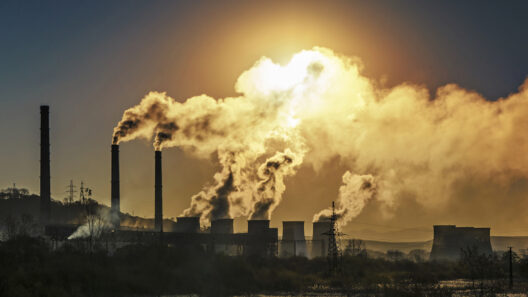Understanding the mechanics of climate change requires delving into the intricate role of greenhouse gases. The greenhouse effect, a natural phenomenon, has been significantly amplified by human activity. This article aims to elucidate the various gases contributing to this enhancement and their associated impacts on global warming.
The Basics of the Greenhouse Effect
The greenhouse effect occurs when certain gases in Earth’s atmosphere trap heat from the sun, preventing it from escaping back into space. This process is vital for maintaining the planet’s temperature and ensuring a habitable environment. Without this effect, Earth would be too frigid to support ecosystems as we know them. However, an excess of greenhouse gases exacerbates this phenomenon, leading to detrimental climate changes.
Primarily, sunlight reaches the Earth, where it’s absorbed by the surface. This energy is subsequently re-radiated in the form of infrared radiation. Greenhouse gases, such as carbon dioxide (CO2), methane (CH4), and nitrous oxide (N2O), absorb this heat and re-emit it, further warming the atmosphere.
The Key Players: Greenhouse Gases Explained
The most prevalent greenhouse gases are carbon dioxide, methane, nitrous oxide, and water vapor. Understanding the unique characteristics and potency of these gases is essential to grasp their profound impact on global temperatures.
Carbon Dioxide: The Dominant Contributor
Carbon dioxide is the most significant greenhouse gas emitted by human activities, predominantly through the combustion of fossil fuels such as coal, oil, and natural gas. Deforestation also plays a crucial role, as trees that would otherwise absorb CO2 are removed. Over the past century, atmospheric CO2 concentrations have surged, leading to a marked increase in global temperatures.
Its longevity in the atmosphere—a span that can exceed a century—coupled with its capacity to absorb heat, makes CO2 a prominent player in the greenhouse effect. The relationship between increased CO2 levels and temperature rise is well-documented, with a direct correlation observed over the last several decades.
Methane: A Potent Heat Trapper
While methane exists in the atmosphere in smaller quantities compared to CO2, it is significantly more effective at trapping heat—about 25 times more effective over a 100-year period. Methane is emitted during the production and transport of coal, oil, and natural gas, as well as from livestock and other agricultural practices, landfills, and wastewater treatment processes.
Its potency makes methane a critical focus in climate change mitigation strategies. Reducing methane emissions can yield immediate benefits in slowing climate change, given its comparatively short atmospheric lifespan of about a decade. Policies targeting methane reduction can lead to substantial decreases in warming potential.
Nitrous Oxide: The Overlooked Greenhouse Gas
Nitrous oxide, despite being less discussed than CO2 and methane, is a greenhouse gas with a global warming potential approximately 298 times that of CO2 over a century. Its sources are primarily agricultural practices, including the use of synthetic fertilizers and the management of livestock manure. As agricultural systems expand to meet global food demands, nitrous oxide emissions pose a growing threat.
This gas remains in the atmosphere for about 114 years, contributing to both global warming and ozone layer depletion. Innovative agricultural practices, such as precision farming and improved manure management, could mitigate these emissions significantly.
Water Vapor: The Natural Player
Water vapor is unique among greenhouse gases; it acts as a feedback factor rather than a direct cause of climate change. As Earth warms due to other greenhouse gases, the atmosphere holds more moisture, leading to increased water vapor levels. This ends up amplifying the greenhouse effect since water vapor itself is a potent greenhouse gas.
Understanding water vapor’s role is crucial, as it intertwines with and exacerbates the impacts of other greenhouse gases. Its concentration is largely dictated by temperature; thus, as temperatures rise, more water vapor is added to the atmosphere, leading to a cycle of warming.
The Cumulative Impacts: Climate Change and Its Consequences
The cumulative effect of increased greenhouse gases is evidenced in multiple climate change impacts. Rising average temperatures lead to extreme weather events, such as hurricanes, droughts, and floods—phenomena that strain natural ecosystems and human communities alike.
Sea levels are rising due to the melting of polar ice caps and thermal expansion of seawater. This rise threatens coastal communities and ecosystems reliant on stable environments. Furthermore, altered weather patterns disrupt agricultural productivity, influencing food security on a global scale.
Moreover, the biodiversity crisis has intensified as habitats become unsuitable for many species. The synergistic effects of climate change and pollution create a challenging landscape for conservationists and policymakers alike.
Strategies for Mitigation: Tackling the Greenhouse Gas Challenge
Mitigating greenhouse gas emissions is imperative. Transitioning to renewable energy sources such as solar, wind, and hydroelectric power can significantly reduce carbon dioxide emissions from fossil fuel consumption. Additionally, implementing energy-efficient technologies in both residential and industrial sectors can further cut emissions.
Agriculture can also play a vital role in reducing greenhouse gas output. Practices such as crop rotation, agroforestry, and organic farming methods can curtail the release of methane and nitrous oxide while simultaneously enhancing soil health and resilience.
Ultimately, public policy must support initiatives aimed at reducing greenhouse gas emissions. International agreements, such as the Paris Agreement, emphasize collaboration among nations to combat climate change, promoting sustainable practices and technologies that align with global reduction targets.
In conclusion, a comprehensive understanding of how gases increase the overall greenhouse effect is crucial in the fight against climate change. The roles played by carbon dioxide, methane, nitrous oxide, and water vapor in warming our planet highlight the urgent need for collective action. Scientifically informed policies, coupled with innovative practices, will be essential for mitigating the impacts of climate change and preserving our environment for future generations.



